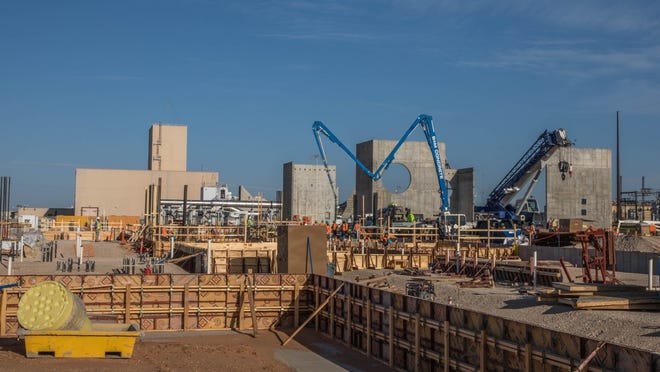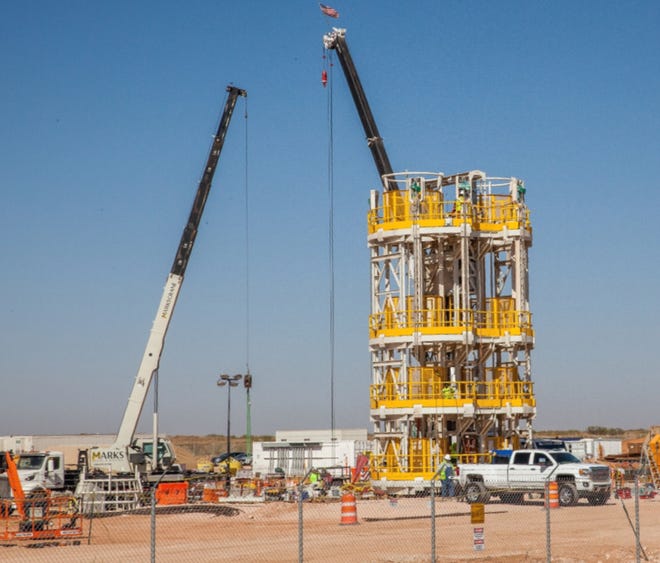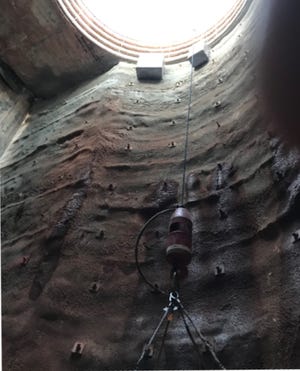Throughout the facilities at the Waste Isolation Pilot Plant, numerous projects continued to upgrade the facility that disposes of nuclear waste underground and allow it to continue its mission.
A two-month pause in primary operations – disposal of nuclear waste and mining space to do so – was completed earlier this year at the Waste Isolation Pilot Plant, it’s longest annual maintenance outage to date that saw almost 100 projects completed in the underground and at the surface.
Meanwhile, WIPP is underway with renewing its operating permit with the State of New Mexico, which could extend its lifetime beyond 2024 as was prescribed in the past permit.
More:WIPP: Nuclear waste shipments from Washington delayed 20 years by 2014 release
While extensive infrastructure construction projects were planned and completed at the facility, the Carlsbad Current-Argus asked for an update on the biggest projects underway at the repository.
Here are the top developments at WIPP taken on at the site and expected to be completed in the coming years.

Ventilation system
A massive rebuild of WIPP’s ventilation system began its development phase in 2018, intending to increase airflow for workers both emplacing waste and mining after available air was constricted following an accidental radiological release in 2014 that contaminated parts of the underground.
More:WIPP: Electric vehicles coming to nuclear waste repository, intended to improve airflow
Known as the Safety Significant Confinement Ventilation System (SSCVS), the project was expected to cost about $288 million – the largest construction project at WIPP in 30 years – and planned to be completed in 2025.
It would up airflows at WIPP from the 170,000 cubic feet per minute (cfm) available now to 540,000 cfm. That would allow mining and waste emplacement to occur at the same time, meaning more shipments of waste could be emplaced and space for disposal could be created quicker.
The SSCVS will include two new buildings: a salt reduction building to pull salt out of the air and a filter building to add additional filtration.
More:Department of Energy outlines priorities at New Mexico nuclear sites for next decade
“The project is really taking shape and it will be hugely beneficial to the success of important national mission,” said Sean Dunagan, president of Nuclear Waste Partnership.

Latest work on the system saw final tie-ins to the stormwater runoff system completed and piping, catch basins and manholes were attached.
Three of 44 concrete foundation pours were conducted at the filter building, and rebar was installed for load-bearing walls.
More:WIPP completes maintenance outage, intends to up shipments of nuclear waste post-pandemic
Walls and slab foundation at the Salt Reduction Building were also complete.
Meanwhile, compressed air lines were being replaced to provide air for underground airlock doors. Compressors were installed on the surface with concrete caps over the trenches holding the lines. Next, 450 feet of connector line was planned, stretching to the underground via the air intake shaft.

Utility shaft
A new utility was also being built at WIPP that will provide air intake as well as increased access to the underground.
More:Waste Isolation Pilot Plant aims to expand underground facility to hold nuclear waste
The shaft will start at the surface and run more than 2,000 feet down into the WIPP underground.
Upcoming work on the shaft, following approval of the permit modification, was a 20-ton piece of angled metal called the plenum to be installed in the shaft to connect ductwork and intake fans on the surface.

Next, the concrete shaft ling will be completed from the plenum to the surface, or collar.
It will require a permit modification underway with the New Mexico Environment Department for further construction and operations and a $75 million contract was awarded for the work.
More:Amid legal battles over WIPP air system rebuild, new contract awarded to finish the work
In total, the project was valued at $197 million.
The completion date for the shaft will depend on approval of the permit modification with the NMED expected to make a decision in late 2021.

Fire suppression
To help fight any fires that occur at WIPP, a new fire loop line was to be installed that could move water to where it was needed at the facility.
More:Nuclear solution for New Mexico’s economy could be key to storing Northeast’s spent fuel
Two 200,000-gallon water tanks were installed and a new pumphouse was built, along with its electrical system planned to tie into a substation.
The fire loop will run around the SSCVS and utility shaft with new hydrants added to accept larger, 5-inch hoses compared to the current 3.5-inch connections, adding a 66 percent increase in water on the target.
New fire alarms monitors were added along with pull boxes, which connected the system to the site’s Central Monitoring Room.
More:WIPP: Restart of ventilation fan needed for worker safety at nuclear repository
WIPP’s fire department also replaced a fire truck and added an ambulance and planned to install a fire suppression system in the waste handling buildings.
Power supply and information technology
Two substations on the surface were at the end of their lifetimes, and new stations are being built with electrical outages planned for their installations.
A new switching gear was installed at one of WIPP’s underground substations and a larger area was mined to enlarge the passageway where the station was located.
More:Nuclear waste project in southeast New Mexico delayed as feds demand answers
WIPP’s high-speed, fiber-optic network was being installed in multiple buildings throughout the site, allowing for faster data transmission online.
The site’s new public address (PA) system will address dead zones in the current system, with the contractor’s designed reviewed by Nuclear Waste Partnership and being refined ahead of installation.
Adrian Hedden can be reached at 575-618-7631, achedden@currentargus.com or @AdrianHedden on Twitter.






